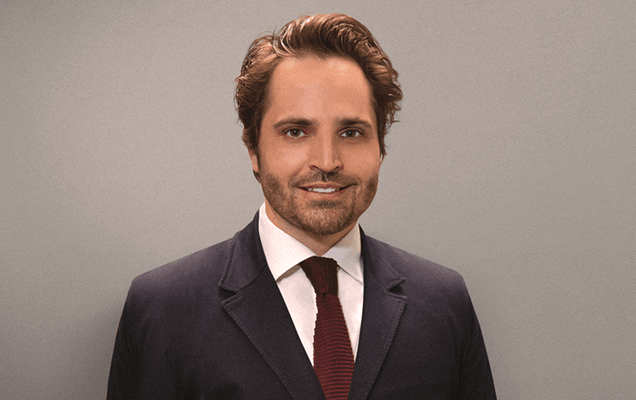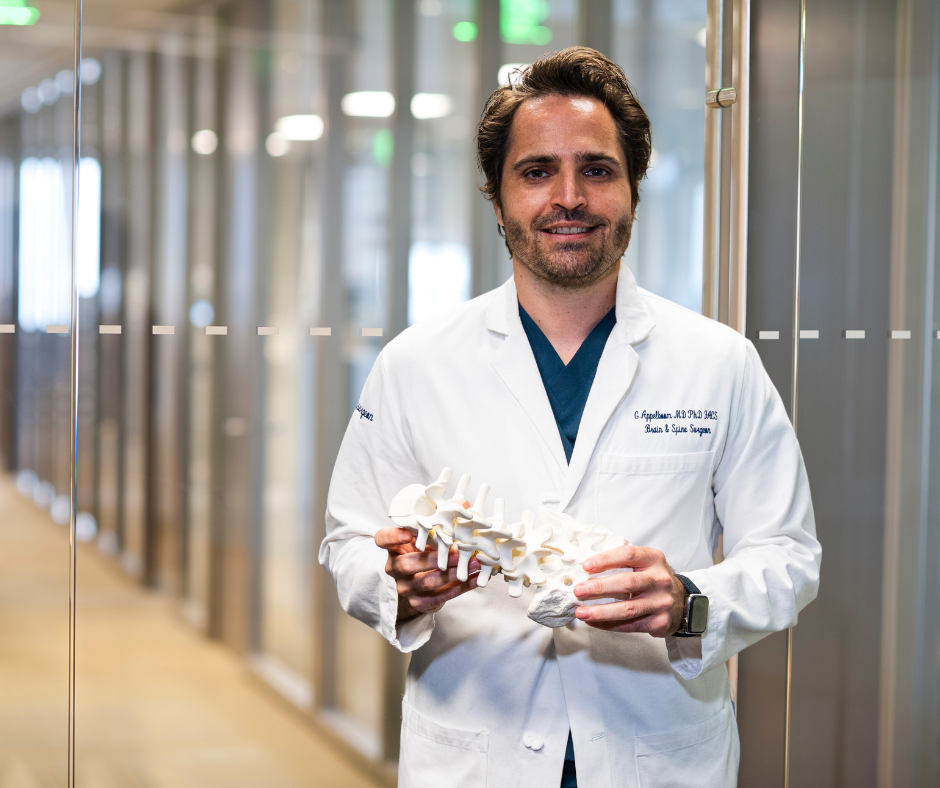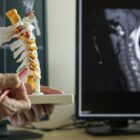Posterior Lumbar Interbody Fusion (PLIF) Surgery
What is PLIF surgery?
PLIF surgery, or posterior lumbar interbody fusion, is a surgical procedure in which the spinal surgeon repairs the lower (lumbar) spine from the back (posterior) of the patient’s body.
PLIF is used to treat a variety of spinal conditions, including degenerative disc disease, which is a common cause of chronic back pain.
PLIF is a form of spinal fusion surgery. Spinal fusion is performed to join together two or more bones of the spine, called vertebrae, eliminating movement between them.
This is done by removing the intervertebral disc between the two vertebrae, which normally enables the spine to bend and rotate, and inserting a bone graft in its place. The bone graft heals over several months, fusing the vertebrae together and stabilizing the spine.
PLIF can be done as a traditional open surgery or as a less minimally invasive surgery, depending on the patient’s condition and medical history.
In the minimally invasive surgery, a surgeon makes a small incision in the muscle and uses a retractor to gently open the layers of tissue that cover the spine
What conditions does PLIF treat?
PLIF surgery can be used to treat the following conditions:
- Degenerative disc disease
- Herniated disc which may cause leg pain
- Fractures to the vertebrae
- Spinal deformities, such as scoliosis or kyphosis
- Spinal weakness or instability, which may be caused by infections or tumors
- Spondylolisthesis, a condition in which on vertebrae slips forward on top of another
What are the benefits of PLIF surgery?
Posterior Lumbar Interbody Fusion (PLIF) surgery offers several benefits for individuals experiencing leg pain and related symptoms due to spinal conditions.
One of the primary advantages of PLIF surgery is the potential for long-term relief. By fusing the vertebrae together, the procedure stabilizes the spine, reducing pressure on the nerve roots and relieving leg pain.
This enhanced stability also helps improve overall spine function and mobility. PLIF surgery has a high fusion rate, meaning that the vertebrae successfully fuse together in most cases, leading to lasting results.
The PLIF procedure can help with spinal stenosis or disc herniation. This can improve a patient’s quality of life and their ability to perform daily activities.
It is important to consult with a qualified neurosurgeon to decide if PLIF surgery is right for you. Your doctor can help you understand the specific benefits PLIF can offer based on your unique condition and circumstances.
It's time to get back
to doing what you love.
What are the risks of PLIF surgery?
While Posterior Lumbar Interbody Fusion (PLIF) surgery can be an effective treatment option for leg pain and spinal conditions, it is essential to be aware of the potential risks associated with the procedure. Like any surgical intervention, PLIF surgery carries inherent risks.
These risks include infection, bleeding, nerve injury, blood clots, and adverse reactions to anesthesia. Additionally, there is a possibility of complications related to the fusion process, such as non-union (failure of the bones to fuse), pseudoarthrosis (false joint formation), or adjacent segment disease (degeneration of the neighboring spinal segments).
Some patients may experience persistent or recurrent pain following the surgery, and there is a risk of complications associated with hardware, such as pedicle screws or rods, such as loosening or breakage. It is crucial to have a thorough discussion with a neurosurgeon to understand the potential risks and complications specific to each individual case, weighing them against the potential benefits, and making an informed decision about undergoing PLIF surgery.
What happens during PLIF surgery?
During PLIF surgery, a bone graft material is placed in the disc space between two vertebrae to promote fusion and stabilize the spine. This is done to treat conditions like spondylolisthesis, spinal stenosis, and other degenerative conditions of the lumbar spine.
There are different types of posterior spinal fusion surgeries available, including the transforaminal lumbar interbody fusion (TLIF) and the PLIF procedure. The latter is often preferred because it allows for greater access to the disc space and has a higher fusion rate.
PLIF surgery involves the use of pedicle screw fixation and facet joints to hold the vertebral bodies in place while the bone grafts heal. Surgery is usually done using a minimally invasive technique. This reduces trauma to the tissue near the area and shortens recovery time.
While PLIF surgery can be highly effective in relieving pain and improving function, it does carry some risks, including nerve root injury, infection, bleeding, and spinal cord injury. It’s important to discuss the risks and benefits of the procedure with your doctor before making a decision.
What to expect after PLIF surgery?
After surgery, most patients stay in the hospital for at least one day before returning home, but in some cases, the patient may return home the same day.
In the days after surgery the patient may feel immediate relief from pre-surgical pain or the pain may resolve gradually as the body recovers from surgery.
Physical therapy is an important part of the recovery process as it helps to improve flexibility, strength, and mobility.
Recovery from PLIF surgery can take several months and typically include rest, physical therapy and pain management to help with recovery. Activities increase as the recovery proceeds. The surgeon will take an x-ray image of the fused levels to ensure that the bone has become one. While the process of bony fusion begins to take place at around 6 weeks, bone remodeling and fusion typically become stronger over a full year.
Is PLIF surgery effective?
Posterior Lumbar Interbody Fusion (PLIF) surgery has been shown to be an effective treatment option for addressing leg pain and related symptoms caused by spinal conditions such as spinal stenosis or disc herniation. The procedure aims to provide stability to the spine by fusing the vertebrae together, relieving pressure on the nerve roots and restoring the natural alignment of the spine.
PLIF surgery has a high fusion rate, meaning that the vertebrae fuse successfully in the majority of cases. This fusion helps to alleviate leg pain, improve overall spine stability, and enhance the patient’s quality of life.
The effectiveness of PLIF surgery can vary depending on individual factors, such as the severity of the spinal condition, the patient’s overall health, and their adherence to post-operative care and rehabilitation.
Is PLIF surgery right for me?
It is important for individuals considering PLIF surgery to consult with a qualified neurosurgeon who can provide a comprehensive evaluation and determine if PLIF is the most suitable and effective treatment option for their specific condition.
You don’t need to suffer in pain any longer-contact our office today to schedule a consultation with one of our doctors.

About Dr. Geoff Appelboom
Dr. Appelboom is a neurosurgeon, a certified fellow of the American College of Surgeons (ACS) and the director of brain and spine neurosurgery at Saint Joseph University Hospitals. Dr. Appelboom trained at Stanford University in robotic brain and complex spine surgery and specializes in cutting edge surgery methods. He is a proud member of the Neurosurgeons of New Jersey, practicing out of their Passaic locations. He is a leader in advanced minimally invasive procedures of the spine (neck and back). He is also an expert in correcting patients suffering from failed spine surgeries. He has published over 90 research papers and is in-network with most commercial insurances.






